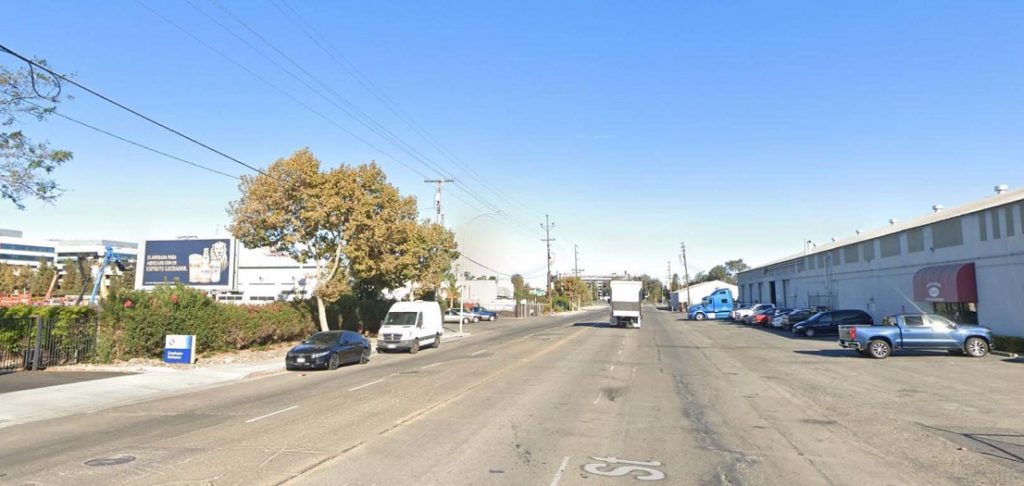As recently reported, San Jose is being sued for not following its own rules. The case centers around the city’s backroom deal to allow Clear Channel to erect new digital billboards along the Guadalupe River Trail near Mineta San Jose International Airport and Highway 101 without competitive bidding—and in conflict with an existing contract that specifically prohibits billboards.
But there is a parallel story here of how the city continues to defer to the billboard companies and along the way attempts to dupe the public into thinking city decision makers are doing good for the community.
As an example, we’re highlighting the billboard takedown concept enthusiastically promoted by those who originally voted to rescind the ban on new billboards on public property that had been in force since Norm Mineta’s term as mayor in the 1970s.
The takedown rules stipulate that for every new digital billboard approved, a number of existing static billboards will be removed. Originally proposed as a 10:1 ratio by the city planning department, the San Jose City Council adopted a watered down 4:1 ratio, meaning only four static billboards will be removed for every new, much more profitable digital billboard approved.
Fast forward to August 2022 and how the takedown rule is being applied—especially in light of an additional requirement added by the council that takedowns should be from low-income and high-crime neighborhoods.
There was a last minute push, the night of the council vote, for this additional provision. At the time we questioned whether this was a public relations stunt or a substantive community benefit—especially since over the course of more than five years that the new city billboard policy was being developed, this concern was never considered.
We suggest that, once again, the billboard companies are the big winners and it is disingenuous to suggest that there is significant public benefit when it comes to allowing new digital billboards.
Our assertion is based on Clear Channel’s takedown list included in a recent city memo, revealing a plan so imbalanced that the company is giving up next to nothing relative to gaining millions of dollars in revenue from new digital billboards while simultaneously creating a new form of blight with a long list of negative environmental and aesthetic impacts duly noted by the Sierra Club, Audubon Society and others.


Some of the billboards on the list, like the site on South First Street, have been in an abandoned and dilapidated state for years. These should have been removed through condemnation and code enforcement.
For the city to ignore these sites and then claim the only way to get rid of these billboards is to reward the same company that created this blight with a takedown credit is obviously wrong.


Many other sites on the list are in industrial areas, not neighborhoods. They are within the boundaries of a zone that may be considered low income or high crime to give proponents something to boast about, but they are not as beneficial as removing an existing billboard from an actual area where people reside.
The site shown below is in an industrial/commercial area that meets both the low income and high crime criteria, but is nowhere near a neighborhood.


There are many billboards in low-income neighborhoods that residents would chose to remove well before most of those designated on Clear Channel’s list.
So once again we have the city deferring to a special interest while exhibiting contempt for the public interest. We have a list of takedowns developed without any evidence of community engagement, and with the mindset that as long as the billboard to be removed can check a box, it’s a victory for those in low-income neighborhoods concerned about existing billboard blight.
San Jose’s implementation of the takedown concept is also a case study of how stupid just counting billboards is vs. scoring them for a list of characteristics that would facilitate and justify their removal.
We’ve cited the flaws in the takedown requirement from our first involvement in the billboard issue and we have referenced how other cities inventory billboards, score them for size, environmental impact, power consumption and other factors. Then when takedowns are feasible, the process is driven by this comprehensive matrix of information and community input to decide locations for removal.
San Jose has done none of this while billboard proponents on the city council have celebrated the coming of digital billboards as a victory for neglected and marginalized neighborhoods. Don’t you believe it.
In fact, the title of the list in the city memo alone is pretty telling, calling it Clear Channel’s takedown list. What we need is the community’s takedown list and a city council and staff who will work honestly and transparently to produce results for the public’s benefit—instead of working on behalf of billboard special interests who don’t care about you and never will.
Jason Hemp, Les Levitt and John Miller are co-founders of No Digital Billboards in San Jose.



Leave a Reply
You must be logged in to post a comment.